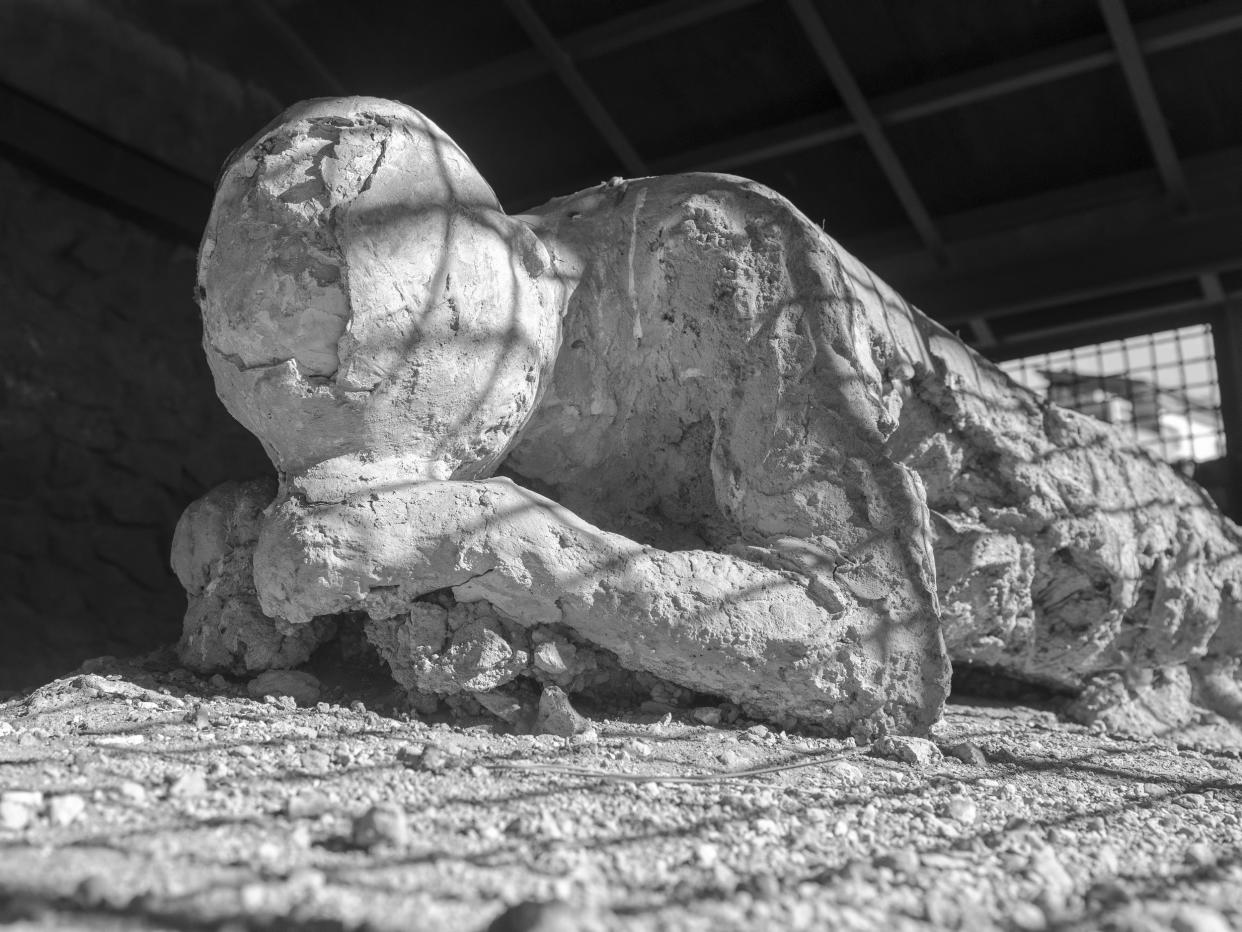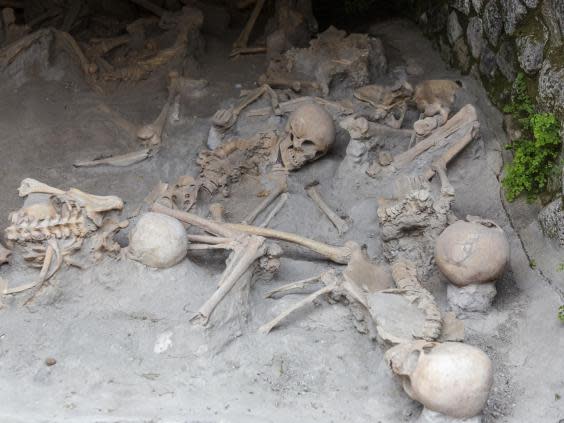Mount Vesuvius eruption so hot it ‘turned victim’s brain to glass’

The eruption of Mount Vesuvius in AD79 was so violent it turned some of its victims’ brains to glass, new research has found.
The volcano on Italy’s western Neapolitan coast famously covered the nearby Roman towns of Pompeii and Herculaneum in clouds of ash and molten rock within minutes, killing thousands where they stood and cowered.
Now, archaeologists have discovered fragments of shiny black glass embedded in the skull of one man who died in Heruclaneum are in fact parts of his brain.
The team, led by Pier Paolo Petrone from the Federico II University in Naples, report in an article in the New England Journal of Medicine the victim’s brain matter had been exposed to such high heat so suddenly it was vitrified — the scientific process of turning a substance into glass.
Examination of charred wood found near the man’s body suggests the heat may have reached as much as 520C.
The finding is remarkable as it is the first time researchers have uncovered vitrified brain material. Normally there is nothing left of the brain for archaeologists to discover due to decomposition.
The glass brain belonged to a man about 25 years old, who is thought to have been the caretaker of a temple dedicated to the cult that worshipped the previous Roman emperor Augustus.
His remains were found during excavations in the 1960s, when he was discovered lying face-down on a bed covered in volcanic ash.
Mr Petrone and his colleagues were able to prove the black shards of glass was once a human brain by identifying particular proteins normally found in brain tissue, which were not present in the ash nearby.
“The detection of glassy material from the victim’s head, of proteins expressed in human brain, and of fatty acids found in human hair, indicates the thermally induced preservation of vitrified human brain tissue,” their article concluded.
The flows of superheated ash, rock and gas that surged into Herculaneum after Vesuvius erupted were so hot they ignited body fat and vaporised soft tissue almost immediately, and were then followed by a sudden drop in temperature.
These fearsome conditions were also behind a solid, spongy mass found inside the victim’s chest. This feature had never been found in other archaeological sites and was best likened to the effects of firebombing during World War II in the cities of Dresden and Hamburg.
Mr Petrone has previously concluded the heat from the eruption was so great it vaporised the bodily fluids and exploded the skulls of some locals who, unlike the unlucky victim at the Augustinian temple, managed to flee to Herculaneum’s stone-walled boathouses.
The only way to survive such a forceful volcanic eruption is to put as much distance between yourself and the mountain as possible, he said.

“Even if sheltered within buildings people will die due to the high temperature of the ash surges, as demonstrated by the victims of Herculaneum, Pompeii and even further settlements, as far as 20km from the volcano,” he told The Guardian. “A silent warning for the three million inhabitants of metropolitan Naples.”
However, while many in Herculaneum and Pompeii were killed in the flash of extreme heat, others may have died a slower and more gruesome death from the toxic fumes.
That’s the conclusion of separate research, also published recently in the journal Antiquity. Tests conducted on the bones of some of those found inside the stone boathouses showed collagen was still present, which indicates they had not been exposed to temperatures above 300 degrees Celsius.
“The people hid for protection, and got stuck,” explained Tim Thompson, the study’s lead author from Teeside University. “The general theory has been that these individuals were instantly vaporised.
“What was interesting was that we had good collagen preservation but also evidence of heat-induced change in the bone crystallinity. We could also see that the victims had not been burned at high temperatures.”
Read more
Philippine volcano’s ‘life-threatening’ eruption risk remains

 Yahoo News
Yahoo News 
